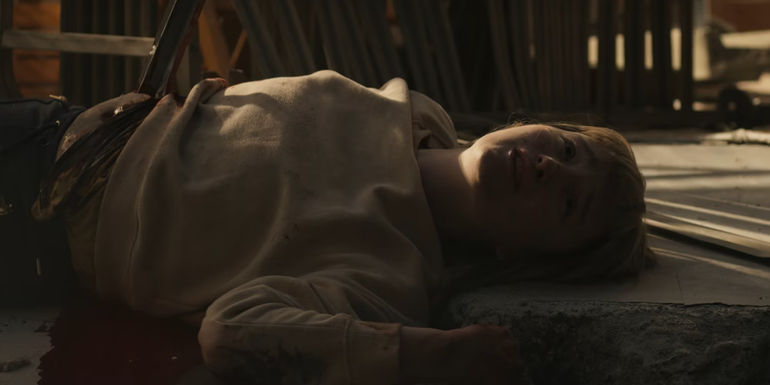
8 Things Netflix's The Abyss Misses Regarding the Real Kiruna Mine Tragedy

Exploring the untold aspects of the Kiruna Mine disaster portrayed in Netflix's The Abyss
8. The Town of Kiruna Has a Long History of Relocation
The Abyss barely scratches the surface when it comes to the extensive timeline of Kiruna's relocation process. In reality, the town has been in the process of moving since 2004, almost two decades before the 2020 earthquake depicted in the film. This gradual shift was prompted by subsidence issues near the mines, which raised concerns about the stability of buildings and infrastructure. The relocation of Kiruna is a complex and ongoing process that highlights a prolonged safety concern that predates the cinematic portrayal.
An overview of the town of Kiruna, Sweden, in The Abyss.
7. Kiruna's Town Center Relocation Progress
Contrary to the film's implication, only the town center of Kiruna has been successfully relocated as of 2022. While significant progress has been made in constructing new buildings at the new site, the majority of Kiruna's residents continue to reside in the original town. The relocation process is far from complete, with a timeline that extends well beyond the events depicted in The Abyss. This ongoing shift of the town center illustrates a different narrative from the film, one that emphasizes the complexity and duration of the relocation efforts.
Tage from The Abyss holding a cable
6. The Absence of Major Cave-Ins in Kiruna
While The Abyss portrays catastrophic cave-ins and sinkholes swallowing Kiruna, the real town has not experienced such extreme events. It is true that minor cracks have been observed in structures due to subsidence caused by the expansion of the Kiruna Mine. However, there is no imminent threat of sudden craters swallowing the town as depicted in the film. The stability of the ground in Kiruna is constantly monitored by LKAB, the mining company that operates the Kiruna Mine. This divergence from reality adds a layer of fiction to the disaster depicted in The Abyss.
A crack in the pavement in the Netflix film The Abyss.
5. Impact on the Sami People
The Abyss overlooks the profound impact of the Kiruna Mine disaster on the Sami people of Northern Sweden. The disruption caused by mining activities and environmental changes directly affects the traditional reindeer herding practices of the Sami community. The expansion of the Kiruna Mine has encroached upon the Sami people's grazing lands, leading to concerns about the loss of their way of life. Additionally, the potential contamination of water sources due to mining activities further exacerbates the challenges faced by the Sami people. This significant consequence for the indigenous population remains unexplored in the cinematic narrative of The Abyss.
An unnabed teenager from The Abyss
4. The Aftermath of the 2020 Earthquake
While The Abyss concludes with the immediate aftermath of the 2020 earthquake, the real recovery process extended over two years. The earthquake caused significant damage to the Kiruna Mine, including the collapse of a ventilation shaft. Repairing the damages incurred by the earthquake required meticulous restoration efforts by LKAB. It was a complex and time-consuming process that culminated in the completion of repairs by 2022. The prolonged restoration period contrasts with the film's swift resolution, highlighting the real-world challenges faced in recovering from such a disaster.
Frigga and Erika from The Abyss
3. Absence of Earthquake-Related Fatalities
Contrary to Frigga's backstory in The Abyss, Kiruna has no recorded earthquake-related casualties. The 2020 earthquake depicted in the film was the largest ever recorded in Kiruna, but it did not cause any fatalities. The film's portrayal of frequent disasters in the region diverges from the actual historical data, which highlights a narrative choice for dramatic effect rather than accuracy. It is important to separate the cinematic interpretation from the reality of the situation, as the absence of earthquake-related fatalities in Kiruna is a testament to the safety measures in place.
Angela Kovacs as Erika Svalin in The Abyss
2. Accelerated Town Move
The film misrepresents the timeline of Kiruna's relocation by attributing it solely to the 2020 earthquake. In reality, the decision to move the town was made years earlier, with the earthquake expediting the process. The relocation of Kiruna involves a comprehensive plan to move the entire town, including residential areas, businesses, and public buildings. While the town center has transitioned to a new location, the full relocation is scheduled for completion by 2034. This gradual and deliberate shift emphasizes the complexity and long-term planning required for such a massive undertaking.
The Abyss Netflix Frigga amidst the disaster
1. No Casualties in the Real Kiruna Mine Disaster
Unlike the tragic events in The Abyss, the actual Kiruna Mine disaster of 2020 resulted in zero casualties. All miners were successfully evacuated without any loss of life. The film's heightening of the stakes with dramatic fatalities diverges from the real-world incident. It is crucial to recognize the efforts made by LKAB and the emergency response teams in ensuring the safety of the miners. While the film may rely on the emotional impact of casualties to drive its narrative, it is important to distinguish between cinematic interpretation and historical reality.
Tina





















